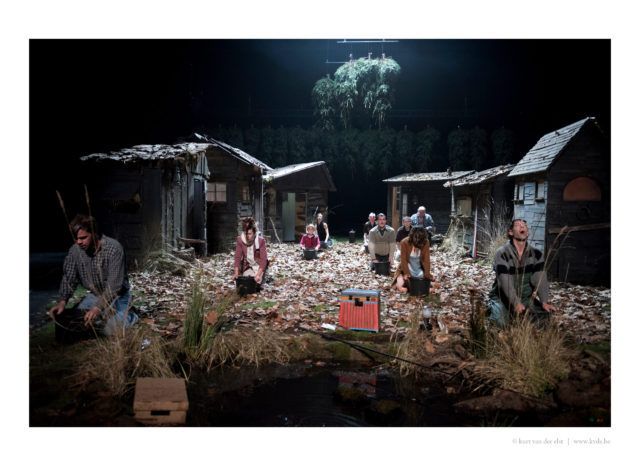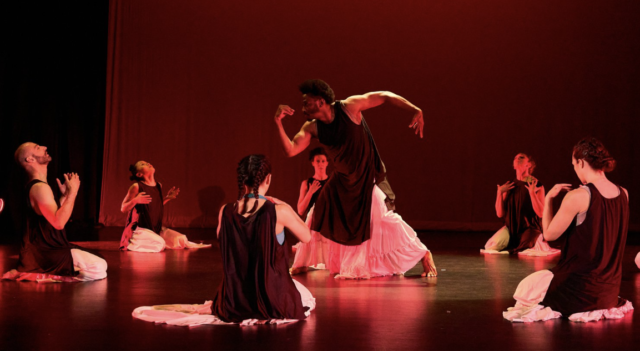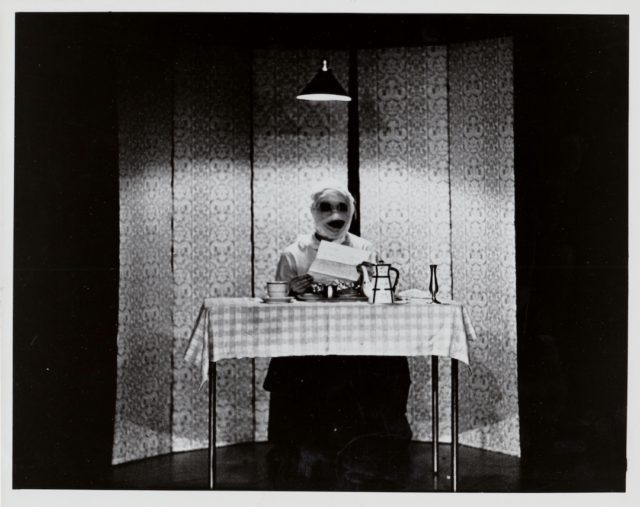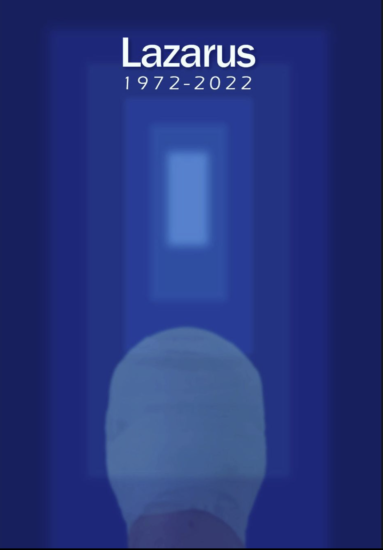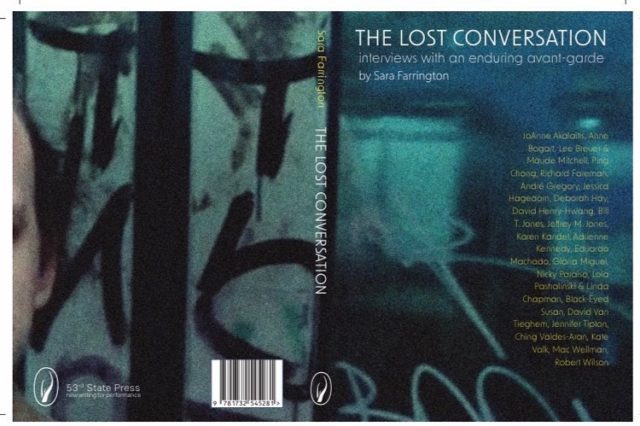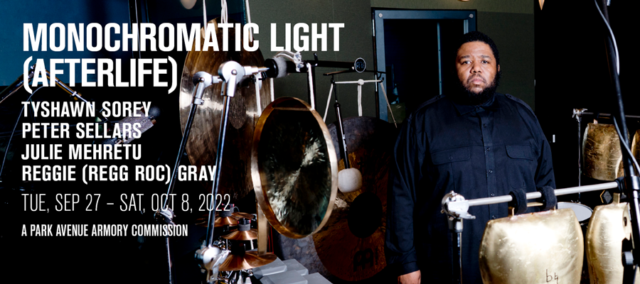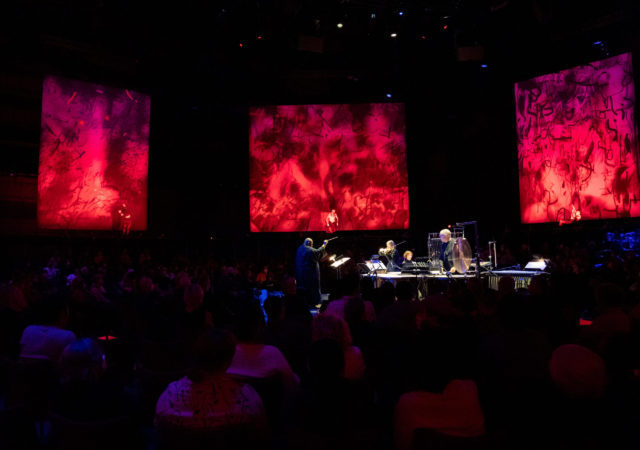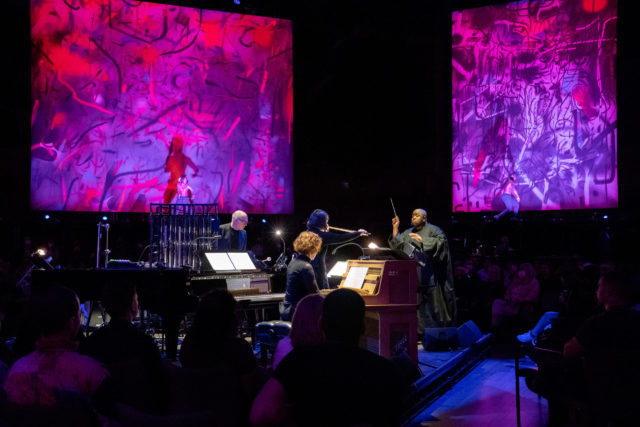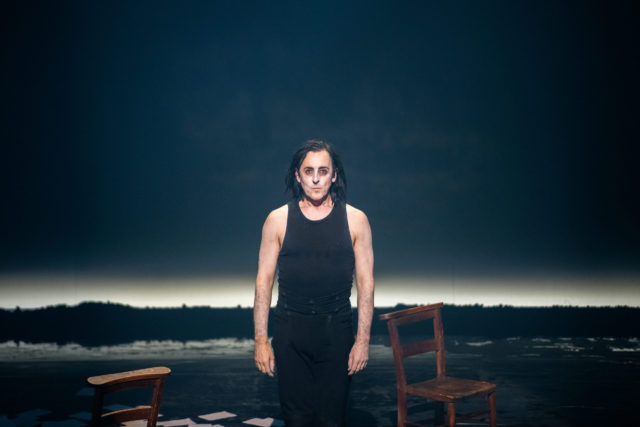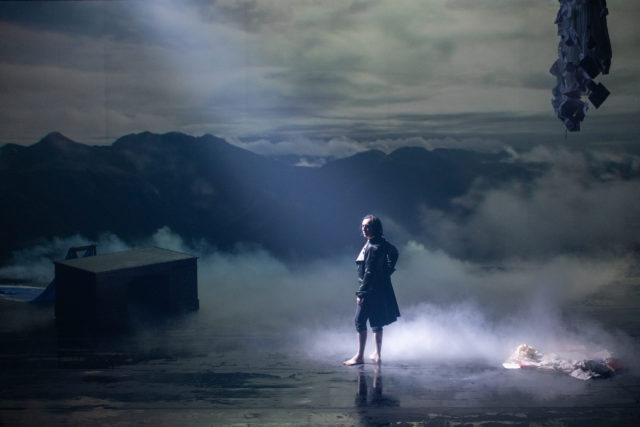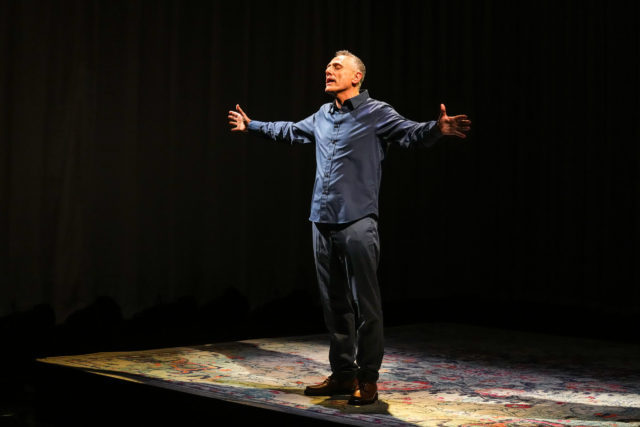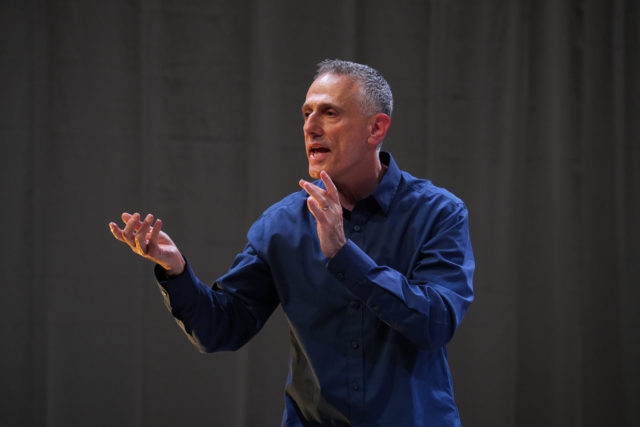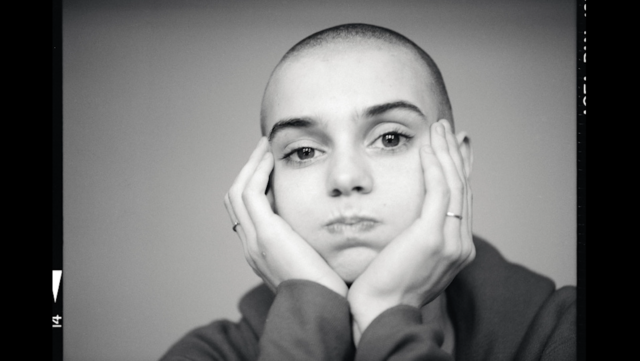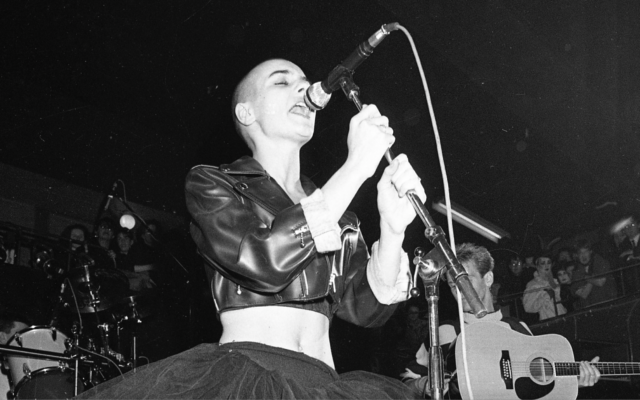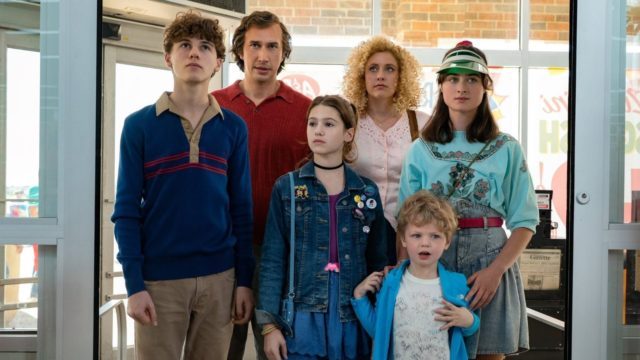
Noah Baumbach’s White Noise opens NYFF60 on September 30
NYFF60
Alice Tully Hall, 1941 Broadway at 65th St.
Walter Reade Theater, 165 West 65th St. at Amsterdam Ave.
Elinor Bunin Munroe Film Center: Francesca Beale Theater, Howard Gilman Theater, Amphitheater, 144 West 65th St. between Broadway & Amsterdam Ave.
September 30 – October 16
212-875-5601
www.filmlinc.org/nyff2022
Martin Scorsese, Tilda Swinton, Noah Baumbach, Carey Mulligan, Zoe Kazan, Paul Schrader, Sigourney Weaver, Joel Edgerton, Frederick Wiseman, Whoopi Goldberg, John Douglas Thompson, Claire Denis, Cate Blanchett, Nina Hoss, Kelly Reichardt, Luca Guadagnino, Chloë Sevigny, Mia Hansen-Løve, Léa Seydoux, Laura Poitras, James Ivory, Park Chan-wook, Jerzy Skolimowski, Elvis Mitchell, Gabrielle Union, Robert Downey Jr., Sarah Polley, Jeremy Pope, Claire Foy, Rooney Mara, Judith Ivey, Jeremy Strong, Anne Hathaway — those are only some of the directors and actors who will be participating in Q&As and introductions at the sixtieth New York Film Festival, taking place at Lincoln Center from September 30 through October 16. Below is the full list of special guests, which feature award winners from around the world as well as up-and-coming filmmakers.
Friday, September 30
Main Slate Opening Night North American Premiere: White Noise (Noah Baumbach, 2022), Q&A with Noah Baumbach & cast, Alice Tully Hall, 6:00
Main Slate Opening Night North American Premiere: White Noise (Noah Baumbach, 2022), introduced by Noah Baumbach, Walter Reade Theater, 6:15
Main Slate Opening Night North American Premiere: White Noise (Noah Baumbach, 2022), introduced by Noah Baumbach, Alice Tully Hall, 9:30
Main Slate Opening Night North American Premiere: White Noise (Noah Baumbach, 2022), introduced by Noah Baumbach, Walter Reade Theater, 9:45
Saturday, October 1
Main Slate U.S. Premiere: Corsage (Marie Kreutzer, 2022), Q&A with Marie Kreutzer and Vicky Krieps, 12:00
Currents U.S. Premiere: The Unstable Object II (Daniel Eisenberg, 2022), Q&A with Daniel Eisenberg, 12:15
Currents U.S. Premiere: Queens of the Qing Dynasty (Ashley McKenzie, 2022), Q&A with Ashley McKenzie, 12:30
Main Slate: Descendant (Margaret Brown, 2022), Q&A with Margaret Brown, 1:30
Main Slate North American Premiere: Master Gardener (Paul Schrader, 2022), Q&A with Paul Schrader, Sigourney Weaver, and Joel Edgerton, 3:00
Currents North American Premiere: The Dam (Ali Cherri, 2022), Q&A with Ali Cherri, 3:30
Main Slate North American Premiere: A Couple (Frederick Wiseman, 2022), Q&A with Frederick Wiseman, 4:30
Spotlight World Premiere: Till (Chinonye Chukwu, 2022), Q&A with Chinonye Chukwu, Danielle Deadwyler, and Whoopi Goldberg, 5:45
Revivals: Le Damier (Balufu Bakupa-Kanyinda, 1996), new restoration, Q&A with Balufu Bakupa-Kanyinda, 6:00
Revivals: Black God, White Devil (Glauber Rocha, 1964), new 4K restoration, introduced by Luiz Oliveira, 7:30
Main Slate: Triangle of Sadness (Ruben Östlund, 2022), Q&A with Ruben Östlund and Dolly de Leon, 9:00
Currents Opening Night U.S. Premiere: Will-o’-the-Wisp (João Pedro Rodrigues, 2022), Q&A with João Pedro Rodrigues, 9:15
Sunday, October 2
Spotlight World Premiere: Till (Chinonye Chukwu, 2022), Q&A with Chinonye Chukwu, Danielle Deadwyler, Jalyn Hall, John Douglas Thompson, Jayme Lawson, Tosin Cole, Keith Beauchamp, and Deborah Watts, 11:00 am
Revivals World Premiere: Drylongso (Cauleen Smith, 1998), 4K restoration, Q&A with Cauleen Smith, 12:45
Main Slate North American Premiere: A Couple (Frederick Wiseman, 2022), Q&A with Frederick Wiseman, 1:00
Main Slate: Triangle of Sadness (Ruben Östlund, 2022), Q&A with Ruben Östlund and Dolly de Leon, 2:15
Currents North American Premiere: Mutzenbacher (Ruth Beckermann, 2022), Q&A with Ruth Beckermann, 3:00
Main Slate North American Premiere: Stars at Noon (Claire Denis, 2022), Q&A with Claire Denis and Joe Alwyn, 5:45
Currents Opening Night U.S. Premiere: Will-o’-the-Wisp (João Pedro Rodrigues, 2022), Q&A with João Pedro Rodrigues, 5:45
Main Slate U.S. Premiere: Corsage (Marie Kreutzer, 2022), Q&A with Marie Kreutzer and Vicky Krieps, 6:00
Currents U.S. Premiere: Queens of the Qing Dynasty (Ashley McKenzie, 2022), Q&A with Ashley McKenzie, 6:15
Main Slate: Descendant (Margaret Brown, 2022), Q&A with Margaret Brown, 8:30
Main Slate U.S. Premiere: De Humani Corporis Fabrica (Véréna Paravel and Lucien Castaing-Taylor, 2022), Q&A with Véréna Paravel and Lucien Castaing-Taylor, 9:00
Currents North American Premiere: The Dam (Ali Cherri, 2022), Q&A with Ali Cherri, 9:15
Monday, October 3
Main Slate: TÁR (Todd Field, 2022), Q&A with Todd Field, Cate Blanchett, Nina Hoss, Mark Strong, Sophie Kauer, and Hildur Guonadóttir, 5:30
Main Slate U.S. Premiere: De Humani Corporis Fabrica (Véréna Paravel and Lucien Castaing-Taylor, 2022), Q&A with Véréna Paravel and Lucien Castaing-Taylor, 6:15
Main Slate U.S. Premiere: Saint Omer (Alice Diop, 2022), Q&A with Alice Diop, 8:30
Main Slate North American Premiere: Stars at Noon (Claire Denis, 2022), Q&A with Claire Denis and Joe Alwyn, 9:00
Tuesday, October 4
Main Slate North American Premiere: Scarlet (Pietro Marcello, 2022), Q&A with Pietro Marcello, 5:45
Main Slate North American Premiere: Stars at Noon (Claire Denis, 2022), introduced by Claire Denis, 6:00
Main Slate U.S. Premiere: Saint Omer (Alice Diop, 2022), Q&A with Alice Diop, 6:15
Main Slate: TÁR (Todd Field, 2022), introduced by Todd Field, 8:30
Currents North American Premiere: Mutzenbacher (Ruth Beckermann, 2022), Q&A with Ruth Beckermann, 9:00
Revivals: No Fear No Die (Claire Denis, 1990), world premiere of 4K restoration, introduced by Claire Denis and Isaach De Bankole, 9:15
Wednesday, October 5
Main Slate U.S. Premiere: Pacifiction (Albert Serra, 2022), Q&A with Albert Serra, 5:30
Spotlight U.S. Premiere: Exterior Night (Marco Bellocchio, 2022), introduced by Fabrizio Gifuni and Fausto Russo Alesi, 5:45
Revivals North American Premiere: The Mother and the Whore (Jean Eustache, 1973), new 4K restoration, Q&A with Françoise Lebrun and Charles Gillibert, 6:15
Main Slate North American Premiere: Showing Up (Kelly Reichardt, 2022), Q&A with Kelly Reichardt and Hong Chau, 9:15
Thursday, October 6
Main Slate North American Premiere: Alcarràs (Carla Simón, 2022), Q&A with Carla Simón, 6:00
Main Slate North American Premiere: Scarlet (Pietro Marcello, 2022), Q&A with Pietro Marcello, 6:15
Main Slate North American Premiere: Showing Up (Kelly Reichardt, 2022), Q&A with Kelly Reichardt and Hong Chau, 6:15
Revivals North American Premiere: The Mother and the Whore (Jean Eustache, 1973), new 4K restoration, introduced by Françoise Lebrun and Charles Gillibert, 6:30
Spotlight: Bones and All (Luca Guadagnino, 2022), Q&A with Luca Guadagnino, Taylor Russell, and Chloë Sevigny, 9:00
Main Slate U.S. Premiere: Pacifiction (Albert Serra, 2022), Q&A with Albert Serra, 9:00
Friday, October 7
Currents Program 1: Field Trips, Q&As with Nicolás Pereda, Natalia Escobar, Simon(e) Jaikiriuma Paetau, and Simon Velez, 1:15
Currents Program 2: Fault Lines, Q&As with Ellie Ga, 1:30
Currents Program 3: Action Figures, Q&As with Sara Cwynar, Diane Severin Nguyen, Fox Maxy, and Riccardo Giacconi, 3:45
Currents Program 4: Vital Signs, Q&As with Mary Helena Clark, Joshua Solondz, and Jordan Strafer, 4:00
Main Slate Centerpiece Selection: All the Beauty and the Bloodshed (Laura Poitras, 2022), Q&A with Laura Poitras, 6:00 & 9:15
Currents Program 5: After Utopia, Q&As with Meriem Bennani and Josh Kline, 6:15
Spotlight World Premiere: A Cooler Climate (James Ivory & Giles Gardner, 2022), Q&A with James Ivory and Giles Gardner, 6:30
Main Slate North American Premiere: Alcarràs (Carla Simón, 2022), Q&A with Carla Simón, 8:45
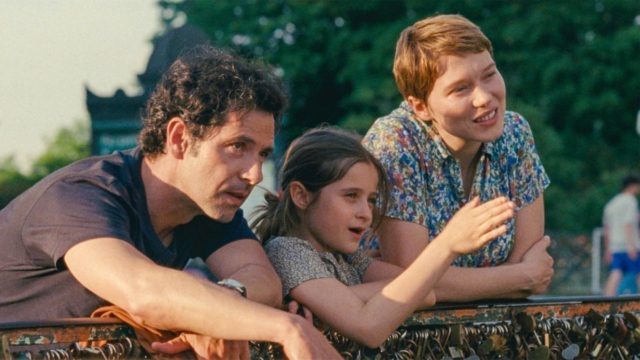
Léa Seydoux stars in Mia Hansen-Løve’s One Fine Morning
Saturday, October 8
Main Slate: Aftersun (Charlotte Wells, 2022), Q&A with Charlotte Wells, Paul Mescal, and Frankio Corio, 12:00
Currents Program 6: Inside Voices, Q&As with Kim Salac, Mackie Mallison, Thuy-Han Nguyen-Chi, Courtney Stephens, Sheilah ReStack, and Angelo Madsen Minax, 12:00
Currents Program 1: Field Trips, Q&As with Nicolás Pereda, Natalia Escobar, Simon(e) Jaikiriuma Paetau, and Simon Velez, 2:15
Currents Program 7: Ordinary Devotion, Q&As with Simon Liu, Alexandra Cuesta, and Pablo Mazzolo, 2:45
Currents Program 2: Fault Lines, Q&As with Ellie Ga, 4:30
Main Slate: One Fine Morning (Mia Hansen-Løve, 2022), Q&A with Mia Hansen-Løve and Léa Seydoux, 6:15
Main Slate U.S. Premiere: Enys Men (Mark Jenkin, 2022), Q&A with Mark Jenkin and Mary Woodvine, 6:30
Currents Program 8: Time Out of Mind, Q&A with Tiffany Sia, 7:00
Currents World Premiere: Slaughterhouses of Modernity (Heinz Emigholz, 2022), Q&A with Heinz Emigholz, 8:15
Currents: Rewind & Play (Alain Gomis, 2022), Q&A with Elisabeth Subrin and Alain Gomis, 9:00
Main Slate: Decision to Leave (Park Chan-wook, 2022), Q&A with Park Chan-wook and Park Hae-il, 9:00
Sunday, October 9
Main Slate U.S. Premiere: No Bears (Jafar Panahi, 2022), introduced by by Mina Kavani, 12:00
Main Slate: One Fine Morning (Mia Hansen-Løve, 2022), Q&A with Mia Hansen-Løve and Léa Seydoux, 12:00
Currents Program 7: Ordinary Devotion, Q&As with Simon Liu, Alexandra Cuesta, and Pablo Mazzolo, 1:00
Currents Program 5: After Utopia, Q&A with Josh Kline, 1:30
Main Slate: Decision to Leave (Park Chan-wook, 2022), Q&A with Park Chan-wook and Park Hae-il, 2:45
Main Slate U.S. Premiere: Unrest (Cyril Schäublin, 2022), Q&A with Cyril Schäublin, 3:00
Currents World Premiere: Slaughterhouses of Modernity (Heinz Emigholz, 2022), Q&A with Heinz Emigholz, 3:15
Currents Program 4: Vital Signs, Q&As with Mary Helena Clark, Joshua Solondz, and Jordan Strafer, 3:45
Spotlight World Premiere: Is That Black Enough for You?!? (Elvis Mitchell, 2022), Q&A with Elvis Mitchell, 5:30
Main Slate U.S. Premiere: R.M.N. (Cristian Mungiu, 2022), Q&A with Cristian Mungiu, 6:00
Currents Program 6: Inside Voices, Q&As with Kim Salac, Mackie Mallison, Thuy-Han Nguyen-Chi, Courtney Stephens, Sheilah ReStack, and Angelo Madsen Minax, 6:00
Main Slate U.S. Premiere: Enys Men (Mark Jenkin, 2022), Q&A with Mark Jenkin and Mary Woodvine, 8:30
Currents U.S. Premiere: Dry Ground Burning (Joana Pimenta & Adirley Queirós, 2022), Q&A with Joana Pimenta and Adirley Queirós, 8:45
Main Slate: Aftersun (Charlotte Wells, 2022), Q&A with Charlotte Wells and Paul Mescal, 9:00
Monday, October 10
Main Slate U.S. Premiere: R.M.N. (Cristian Mungiu, 2022), Q&A with Cristian Mungiu, 12:00
Spotlight North American Premiere: The Super 8 Years (Annie Ernaux and David Ernaux-Briot, 2022), Q&A with Annie Ernaux and David Ernaux-Briot, 12:30
Main Slate U.S. Premiere: Unrest (Cyril Schäublin, 2022), Q&A with Cyril Schäublin, 1:00
Currents North American Premiere: Human Flowers of Flesh (Helena Wittmann, 2022), Q&A with Helena Wittmann, 2:45
Spotlight: “Sr.” (Chris Smith, 2022), Q&A with Chris Smith, Robert Downey Jr., Susan Downey, and Kevin Ford, 3:00
Currents Program 9: New York Shorts, Q&As with Jamil McGinnis, Sarah Friedland, Charlotte Ercoli, Alex Ashe, and Lloyd Lee Choi, 3:15
Spotlight: Women Talking (Sarah Polley, 2022), Q&A with Sarah Polley, Claire Foy, Rooney Mara, Judith Ivey, and Sheila McCarthy, 6:15
Currents Program 3: Action Figures, Q&As with Sara Cwynar, Diane Severin Nguyen, Fox Maxy, and Riccardo Giacconi, 6:30
Main Slate U.S. Premiere: Stonewalling (Huang Ji, Ryuji Otsuka, 2022), Q&A with Huang Ji and Ryuji Otsuka, 8:15
Currents U.S. Premiere: Dry Ground Burning (Joana Pimenta & Adirley Queirós, 2022), Q&A with Joana Pimenta and Adirley Queirós, 8:30
Currents: Rewind & Play (Alain Gomis, 2022), Q&A with Elisabeth Subrin and Alain Gomis, 8:45
Main Slate: The Eternal Daughter (Joanna Hogg, 2022), Q&A with Joanna Hogg and Tilda Swinton, 9:00
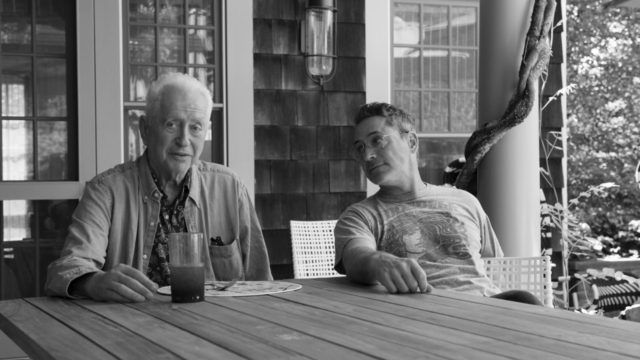
Chris Smith’s “Sr.” explores the life and times of Robert Downey Sr.
Tuesday, October 11
Spotlight: “Sr.” (Chris Smith, 2022), Q&A with Chris Smith, Robert Downey Jr., Susan Downey, and Kevin Ford, 3:00
Currents North American Premiere: Tales of the Purple House (Abbas Fahdel, 2022), Q&A with Abbas Fahdel, 5:15
Main Slate U.S. Premiere: Stonewalling (Huang Ji, Ryuji Otsuka, 2022), Q&A with Huang Ji and Ryuji Otsuka, 5:30
Main Slate: The Eternal Daughter (Joanna Hogg, 2022), Q&A with Joanna Hogg and Tilda Swinton, 6:15
Main Slate: All That Breathes (Shaunak Sen, 2022), Q&A with Shaunak Sen, 6:30
Main Slate U.S. Premiere: EO (Jerzy Skolimowski, 2022), Q&A with Jerzy Skolimowski, 9:00
Spotlight North American Premiere: The Super 8 Years (Annie Ernaux and David Ernaux-Briot, 2022), Q&A with Annie Ernaux and David Ernaux-Briot, 9:00
Main Slate North American Premiere: Trenque Lauquen (Laura Citarella, 2022), Q&A with Laura Citarella, 9:00
Currents North American Premiere: Human Flowers of Flesh (Helena Wittmann, 2022), Q&A with Helena Wittmann, 9:15
Wednesday, October 12
Main Slate NYFF 60th Anniversary Celebration: Armageddon Time (James Gray, 2022), Q&A with James Gray, Jeremy Strong, Anne Hathaway, Banks Repeta, and Jaylin Webb, 6:00
Currents: Remote (Mika Rottenberg & Mahyad Tousi, 2022), Q&A with Mika Rottenberg and Mahyad Tousi, 6:15
Currents Program 9: New York Shorts, Q&As with Jamil McGinnis, Sarah Friedland, Charlotte Ercoli, Alex Ashe, and Lloyd Lee Choi, 6:30
Spotlight World Premiere: Personality Crisis: One Night Only (Martin Scorsese and David Tedeschi, 2022), Q&A with David Tedeschi and Martin Scorsese, 9:00
Main Slate: All That Breathes (Shaunak Sen, 2022), Q&A with Shaunak Sen, 9:00
Currents North American Premiere: The Adventures of Gigi the Law (Alessandro Comodin, 2022), Q&A with Alessandro Comodin, 9:15
Thursday, October 13
Main Slate U.S. Premiere: No Bears (Jafar Panahi, 2022), introduced by by Mina Kavani, 3:15
Spotlight World Premiere: She Said (Maria Schrader, 2022), Q&A with Maria Schrader, Carey Mulligan, Zoe Kazan, Jodi Kantor, and Megan Twohey, 6:00
Main Slate U.S. Premiere: Return to Seoul (Davy Chou, 2022), Q&A with Davy Chou and Park Ji-Min, 6:15
Currents North American Premiere: The Adventures of Gigi the Law (Alessandro Comodin, 2022), Q&A with Alessandro Comodin, 6:15
Main Slate U.S. Premiere: EO (Jerzy Skolimowski, 2022), Q&A with Jerzy Skolimowski, 6:45
Currents: Remote (Mika Rottenberg & Mahyad Tousi, 2022), Q&A with Mika Rottenberg and Mahyad Tousi, 9:00
Main Slate NYFF 60th Anniversary Celebration: Armageddon Time (James Gray, 2022), Q&A with James Gray and Jeremy Strong, 9:00
Currents: Three Tidy Tigers Tied a Tie Tighter (Gustavo Vinagre, 2022), Q&A with Gustavo Vinagre, 9:15
Friday, October 14
Currents: Three Tidy Tigers Tied a Tie Tighter (Gustavo Vinagre, 2022), Q&A with Gustavo Vinagre, 3:45
Main Slate NYFF 60th Anniversary Celebration: Armageddon Time (James Gray, 2022), introduced by James Gray, 6:00
Spotlight World Premiere: Personality Crisis: One Night Only (Martin Scorsese and David Tedeschi, 2022), Q&A with David Tedeschi, 9:00
Main Slate Closing Night Selection U.S. Premiere: The Inspection (Elegance Bratton, 2022), Q&A with Elegance Bratton, Jeremy Pope, Gabrielle Union, and Raúl Castillo, 6:00 & 9:00
Main Slate U.S. Premiere: No Bears (Jafar Panahi, 2022), introduced by Mina Kavani, 8:45
